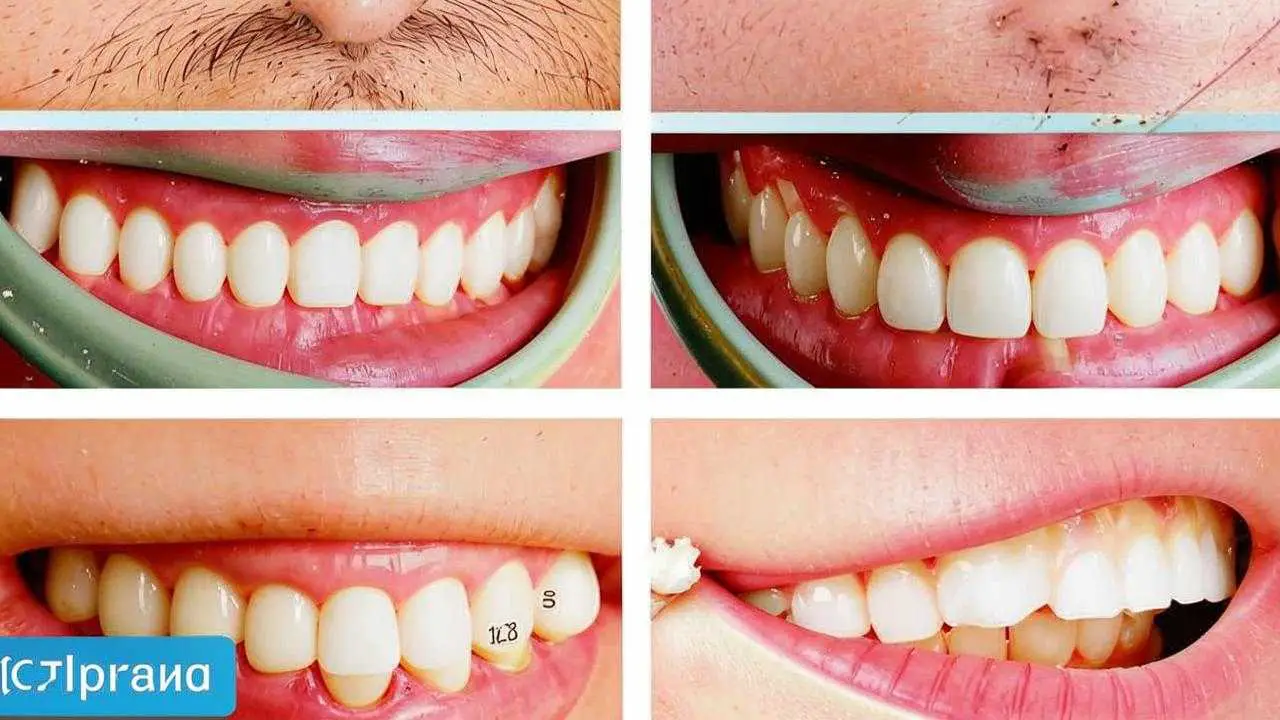Reading time ~ 4 min Number of readings: 19266
Veneers are thin plates (microprostheses) made of ceramic, composite, zirconium dioxide, which are attached to the front surface of the teeth. Installing a veneer involves treatment of the dental surface. They call it anatomical contouring of the enamel. In fact, the procedure is a grinding of the upper layer of enamel to the thickness of the dental onlay (0.2-0.5 mm). This is necessary for the microprosthesis to firmly cover the tooth, not protrude forward in relation to neighboring units.
Mild pain after the installation of veneers – a normal reaction to the intervention. There may be sensitivity to hot, cold, soreness when biting. Such sensations pass on their own within a few days. Mild discomfort is normal, pathology is indicated by the appearance of sharp, throbbing pain.
Possible causes of complications
If the teeth hurt after the veneers are installed, the cause is probably the following:
- excessive preparation of enamel;
- the onlays are incorrectly matched in shape, size;
- a veneer that has chipped or broken away from the enamel;
- untreated caries;
- use of low-quality materials.
With the wrong shape, size, the onlay will protrude beyond the boundaries of the tooth, pressing on the gum, neighboring units. With deep enamel trimming, teeth begin to react with pain to temperature stimuli. Another cause of complications is the incorrect application of composite adhesive. Overdrying of the composition causes the appearance of microcracks, where over time pathogenic bacteria penetrate, destroying dental tissues.
What to do if the tooth under the veneer hurts?
Painful sensations arise due to non-compliance with the preparation process, poor enamel condition, complex bite defects, bruxism or chronic periodontal inflammation. If your teeth hurt after veneers, you should see a dentist. The doctor will establish the cause of discomfort and carry out treatment. Therapeutic tactics depend on the cause of the soreness.
- If the tooth hurts after the veneer because of the wrong shape, size, the problem is solved by correction – the doctor corrects the anatomical shape of the onlay, grinds, polishes it;
- if pain occurs due to a violation of the fixation of the plate, it is glued in the place of detachment, completely reinstalled or replaced (in case of chipping);
- if the pulp is inflamed, the tooth is depulped and the canals are filled. This is done without removing the veneer, the doctor provides access to the pulp from the inside of the tooth.
There may be a feeling of looseness in the area of the restored units when the tooth rows close together. This is normal. The shape and size of the contact surfaces have changed and a new microrelief has appeared. It will take 1-2 days to get used to it. If discomfort continues to bother you, you need to see a doctor to correct the veneers.
How you can relieve pain
If the tooth hurts after the veneer, temporarily relieve the condition will help to take analgesics – 1-2 tablets of Ketanov, Dexalgin, Nurofen, Ketorol, Paracetamol, etc. The drugs will dampen painful sensations, partially eliminate inflammation, but only a doctor can eliminate the cause of pain.
When pain is normal, and when it is necessary to go to the doctor immediately?
Tooth sensitivity after the installation of veneers can increase to hot, cold dishes, drinks, there may be a slight soreness when pressing on the tooth (biting, chewing). Usually, such discomfort goes away within 3-5 days. If in 2 weeks after fixation of microprostheses the pain increases, it is necessary to urgently go to the doctor. This is most likely due to excessive grinding of the tooth surface.
Grinding for veneers – filigree work, the doctor removes the top layer of enamel to the thickness of the microprosthesis. If the grinding was performed in violation of the protocol, even under the veneer, the tooth will react painfully to temperature and chemical stimuli. Dentin will continue to deteriorate, and attacks of intense, sharp pain are inevitable.
What symptoms to go to the doctor for
- Sharp, intense pain;
- Increased sensitivity, increasing pain 2 weeks after restoration;
- Gingival pain, redness, swelling;
- pain when biting, clenching the jaw;
- the microprosthesis does not adhere tightly to the enamel;
- chipping, damage to the veneer.
Care recommendations
The service life of microprostheses is 5-20 years (depending on the material). Simple recommendations will help to extend the service life of restorations:
- Do not miss the first examination after the veneers are installed – the doctor should check the correct alignment of the teeth;
- Use protective mouth guards in case of bite disorders, bruxism, abrasion of teeth;
- have regular check-ups at the dentist (every 6 months), professional cleaning;
- carefully observe daily hygiene – brush your teeth twice a day, floss, use irrigator, rinse your mouth after meals;
- avoid too hard foods (nuts, seeds, grillage, etc.);
- use a protective mouth guard when playing sports.
Prosthetics with veneers allows you to get a beautiful smile, eliminate various defects and shortcomings associated with the shape, size, position of the teeth in the row. Thin plates effectively eliminate cracks, diastemas, stains, chips on the enamel, reliably protect dental tissues from caries, enamel abrasion.

